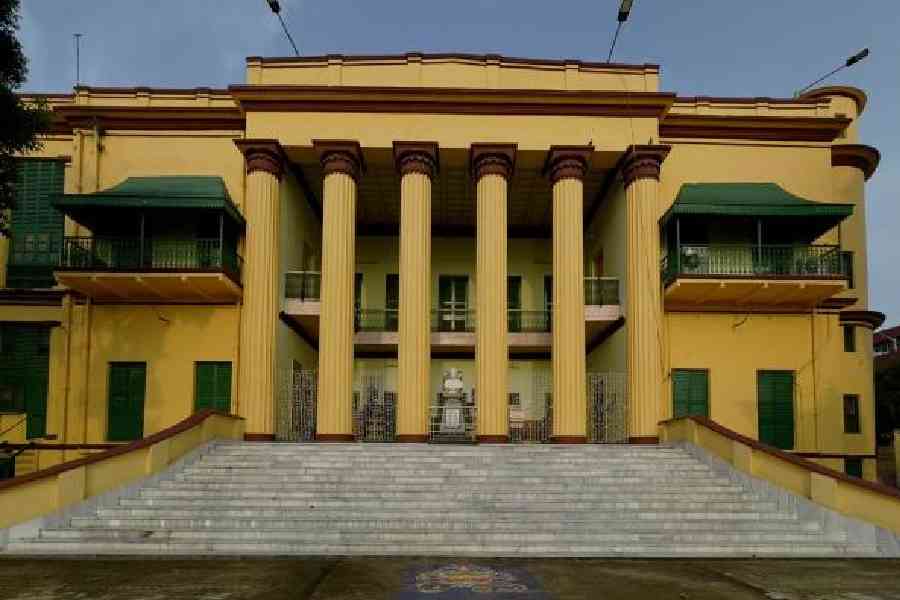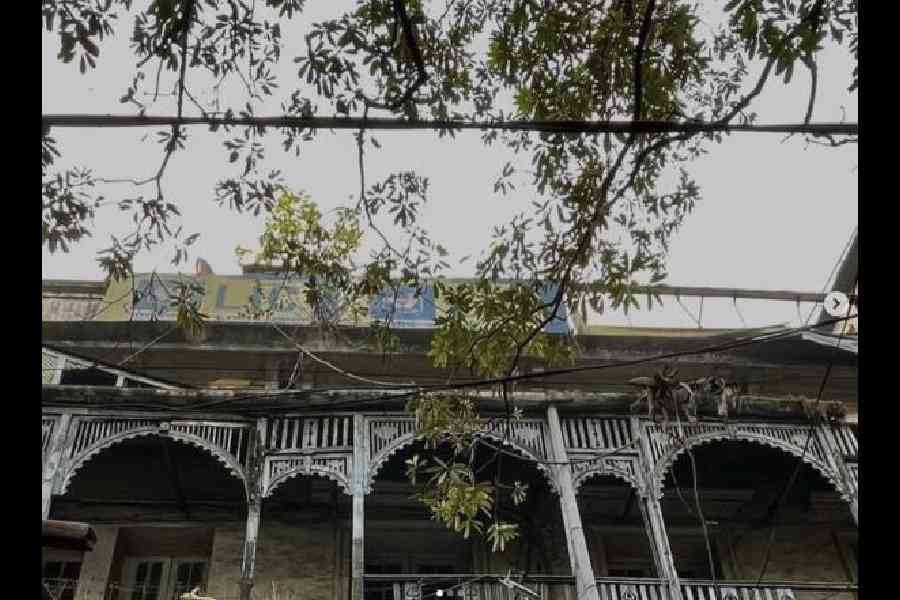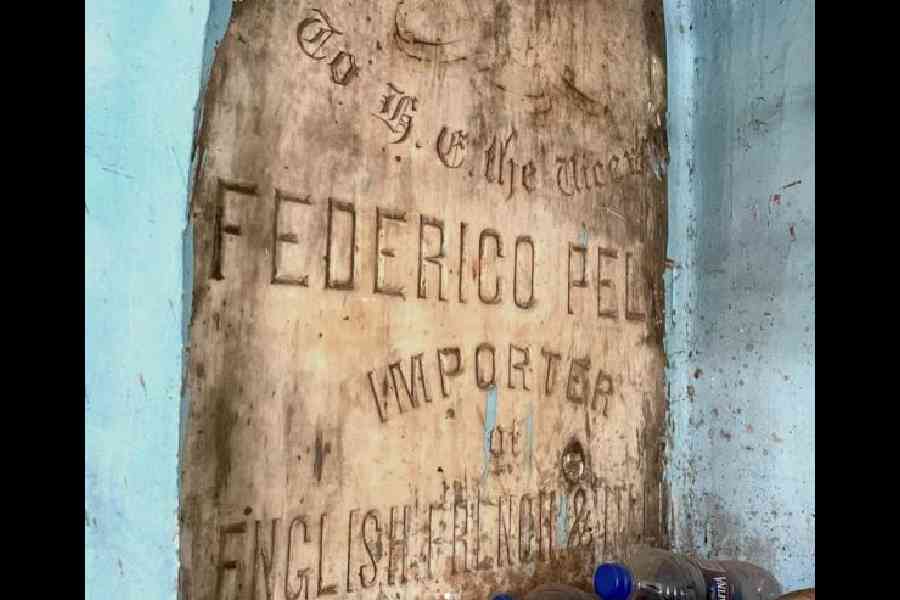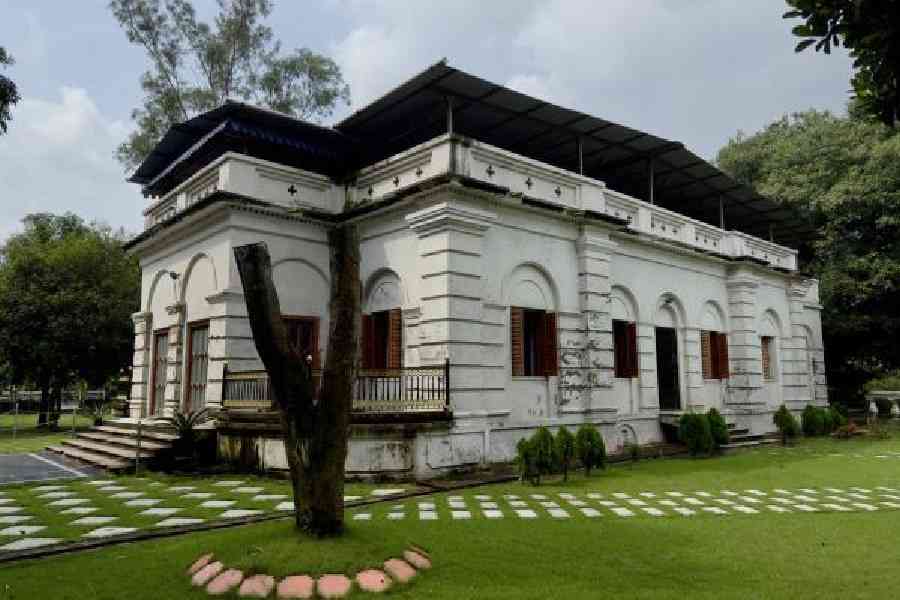Every weekend, the alarm goes off at 4am, so that I can take a break from my daily work routine to pursue something I have always loved — street photography. I arm myself with an iPhone 15 Pro Max, a DJI Osmo Tripod, a bottle of water and off I go to see the world, recalling the words of Dr. Seuss: “Your mountain is waiting.” The idea is to wander, allowing the camera to lead and visiting a place with as few preconceptions as possible, which is always a challenge. Here are some moments from the recent past.
Escaping the shadow of ruins
Eventually, we all talk about Rabindranath Tagore but his nephew, Abanindranath, rarely gets to bask in these conversations. If pictures could be written, he did just that. The pioneer of modern Indian art started his lifelong journey with the brush and paint 20-odd kilometres away from Calcutta at a garden house in Konnagar. And to see a ruined treasure restored is bliss.
His Rabikaka didn’t have an affinity for rote learning, neither did he. His first ‘guru’ was a classmate who taught him to draw pictures of goddesses and there was always the desire to play with paint.
In his dictated autobiography, Jorasankor Dhare, is a mention of time spent at the sprawling garden overlooking the Hooghly river. He wrote about how he learned to draw a hut and how its roof descended in a curve and was not straight.
It would be wrong to say that formal training was completely absent from his life. The Italian painter Gillardi, who was then the vice-principal of Calcutta Art School, and later C.L. Palmer, an English artist, had enough suggestions. The man whom we credit for reviving Indian painting had Radha-Krishna series (1894-96) as his first major work.
Critics, at first, were not kind but he wasn’t demotivated. E.B. Havell, the then principal of the Calcutta Government Art College, encouraged him to follow his style and, at his request, he joined the Art College as its vice-principal. And then came two of his early pupils — Nandalal Bose and Suren Ganguli.
Not just the canvas, he also had a way with words. Rajkahini, Khirer Putul, Nalak, Buro Angla and Alor Phulki enthralled children as well as the young at heart with its message for humanity at large.
After the death of his wife, Suhasini he gave up painting and turned to ‘kutum-katams’ or assemblage art made from pieces of wood, coconut shells and stones. His equipment were a small saw, a pen-knife, a chisel and nails.
His message: Break conventions to celebrate the power of one’s imagination. No wonder his painting of Rabikaka as a blind bard is a favourite of mine.
Libraries are becoming forgotten heroes
Book spines line up like soldiers inside Uttarpara Jaykrishna Public Library but they are not called to wars of ideas as much as they were in the times of Michael Madhusudan Dutta and Sri Aurobindo. India’s, if not Asia’s, first free-circulating library is the pride of the people of Uttarpara.

Uttarpara Jaykrishna Public Library
It was here on May 30, 1909, that Sri Aurobindo delivered his first public address after his release from Alipore Jail. And it was here the poet-playwright Michael Madhusudan Dutta lived on two occasions.
Jaykrishna Mukherjee, influenced by Dwarkanath Tagore and the London Public Library act 1850, believed in freedom of the mind. His early calls for a library with a reading room fell on deaf ears of the commissioner of revenue, Burdwan Division, encouraging him to start constructing the river-front property at a cost of Rs 85,000 in 1856.
When the library was opened in 1859, the early collection was built upon the books he bought from “Hurkaru Library” and then more from Calcutta booksellers.

Remains of Piedmont-born Federico Peliti's restaurant in Calcutta
It would be remiss to not mention that in the backdrop was the Vernacular Literature Society, which was established in 1851, in part modelled upon the Society for the Diffusion of Useful Knowledge (1826). The idea was to encourage the publication of Bengali translation of popular English books. Reverend James Long and many wealthy Indians, including Mukherjee, supported the project.
The English educator Mary Carpenter visited ‘Ooterparrah’ with Ishwar Chandra Vidyasagar and other celebrated members of the society to be impressed by the level of knowledge school students had of Thomas Gray’s Elegy in a Country Churchyard and the hospitality of the Mukherjee family.
Of course, Jaykrishna Mukherjee had his critics when it came to the way he reportedly dealt with some of his tenants but what he will always be remembered for is the treasure he left behind for generations to cherish.
It was a Sunday morning and a motley group leaning into laughter therapy had gathered. They knew what lies inside but sitting here 15-odd kilometres away in Calcutta, we continue to turn a blind eye to libraries.
Ice King of Boston chills Calcutta
Piedmont-born Federico Peliti was responsible for teaching Calcutta the joy of childlike elation that 40 licks of any ice cream brings, besides offering respite from soaring temperatures. That would be doing injustice to Frederic Tudor, the Ice King of Boston.
Peliti popularised Western-style ice cream in India through his confectionery, Peliti’s, in Simla, and then an outlet on Calcutta’s Bentinck Street, before moving business to Esplanade Row where only a marble plaque remains fixed to a pile of bricks.
Before Peliti, here is how Calcutta chilled. In the early 19th century, Boston would often send ships loaded with ballast. Samuel Austin, another Boston merchant, approached Tudor to send cargoes of ice to major Indian ports.
Tudor warmed up to the idea of shipping ice, and engaged another partner, William Rogers. The brig Tuscany was engaged and 60 cords of ice (180 tons) were loaded. The Tuscany sailed on May 12, 1833, and approached the Ganges delta in September.
Ice from Boston? The Calcutta Courier reported on September 6 the arrival of the ship and the Board of Customs, Salt and Opium authorised the landing of the cargo of ice, free of duty.
Though a third of the cargo was lost, there was enough to be sold at Brightman’s Ghaut (Ghat), Strand, at “four annas per seer”. There was enough cargo to last around 60 days.
Before Boston froze Calcutta’s imagination, ice was an expensive commodity. To make ice, shallow pits had to be dug, filled out with straw, lined with porous earthenware containers into which a few inches of water were poured in. Evaporation and cool wind did its trick, producing a thin film of ice, disparagingly referred to as ‘Hooghly slush’.

The stone at the entrance to Peliti's
Tudor wanted to send more ice to Calcutta but had a falling out with Samuel Austin. The third partner, Rogers, was presented, on November 22, a silver gilt cup by Lord William Bentinck. Rogers made Calcutta his home, first as a boarding-house keeper, then as a part-time dentist.
Soon after arrived Peliti at whose confectionary worked one Angelo Firpo of Genoa. He, of course, went on to establish Firpo’s.










